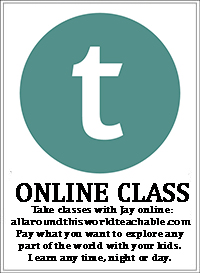This week we’re going to tell two different stories of two different territories that have two very different relationships with China. Hong Kong was a British colony for over 150 years but is now formally part China. Taiwan was first part of China, then Japan, and is now part of China again…though that depends very much not only on who you ask, but how you ask and why. Telling these two tricky tales is exactly the kind of challenge we here at “All Around This World” enjoy, so let’s get to it!
Hong Kong is a group of 200 relatively small islands of the southeast coast of China that has the distinction of being one of just two “special administrative regions” of China. (The other is Macau.) Hong Kong has been “special” for over two thousand years, when successive imperial Chinese dynasties began to use it as a trading center. Europeans caught on about five hundred years ago, and in the early 16th century the Portuguese tried, and failed, to take it. Two hundred years later the British had more success, but only after winning a war with China over opium.
Opium?
Yes, opium. In the 19th century the British fought two wars with China over opium, the poppy-based narcotic that was growing increasingly popular in Asia at the time. The First and Second Opium Wars were less about opium itself than the British insistence that China remain open to international trade. The British Empire and China’s Qing Dynasty had been jostling about trade for a century, with the Chinese eventually placing strict restrictions on British imports. The British had been especially successful at importing opium to China–at the time an estimated two million Chinese were addicts–and in 1839 sent troops to China to keep both opium (and the profits) flowing. The British won surprisingly easy military victories that not only brought Hong Kong Island into the British Empire, resulted in the legalization of the opium trade in China, but severely weakened the Qing Dynasty. By the end of the century the British had even negotiated to lease territories surrounding Hong Kong Island from China for 99 years. (By the way, by the 1880s an estimated tens of millions of Chinese, if not more, were opium addicts.)
Fast forward about a hundred years, during which, under British rule, Hong Kong had become a densely developed economic powerhouse. As the end of the lease approached, the British and Chinese agreed on the impossibility of separating Hong Kong Island from the other land the British controlled. That raised the stakes of the transfer. Would the British actually return all of highly profitable Hong Kong to Chinese rule? Would intensely capitalist Hong Kong itself consent to becoming part of socialist China? After many years of intense negotiation, the British conceded to the peaceful return all of Hong Kong to China, and on July 1, 1997, that’s what happened.
Since the transfer of sovereignty Hong Kong has operated under the motto, “one country, two systems.” This means China’s central government asserts full control over Hong Kong, but at the same time allows Hong Kong to maintain a capitalist economy and separate political system…at least until 2047, when this part of the agreement expires. As Hong Kong’s “Basic Law” reads, “The socialist system and policies shall not be practised in the Hong Kong Special Administrative Region, and the previous capitalist system and way of life shall remain unchanged for 50 years.” What happens next? No one knows.
The story of Taiwan, an island a bit further up the eastern coast of China than Hong Kong, has an equal number of twists and turns and its future is just as unclear. Today the People’s Republic of China (the political entity that controls the mainland, the one most of us call “China”) claims ownership of the island. At the same time, the Republic of China (the political entity that has long dominated Taiwan), claims both Taiwan and the mainland as their China. Confused? Don’t be ashamed. It’s confusing.
In its two thousand or so years of documented history, Taiwan has rarely been a fully willing, seamlessly integrated part of mainland China. Though the dominant Chinese dynasties may have been aware of Taiwan since the 3rd century A.D., they hadn’t yet overcome the unwilling Taiwanese indigenous population before the Portuguese arrived there in 1544. (They named the island “Formosa,” which means “beautiful.”) The Dutch replaced the Portuguese, the Spanish replaced the Dutch…in 1683 China’s Qing Dynasty booted the Europeans and took charge. The Chinese kept Taiwan for two hundred years, until they lost it to Japan. Japan not only developed Taiwan as an industrial center and used it as a military base, but embarked on an extensive campaign to assimilate Taiwanese people into the Japanese Empire.
MEANWHILE, ON THE CHINESE MAINLAND….
Meanwhile, on the Chinese mainland, the Chinese Civil War (1925 to 1949) raged between the Kuomintang (KMT or Chinese Nationalist Party) and the Chinese Communist Party. The Communists, under the leadership of Mao Zedong, eventually pushed Chiang Kai-Shek’s KMT out and declared the People’s Republic of China. Where did Chiang Kai-Shek and the Nationalists go? To Taiwan, of course.
Why Taiwan? In 1945, when Japan lost big in World War II, the U.S. enabled the Republic of China to accepted the surrender. When Mao’s forces defeated the KMT on the mainland, about two million Nationalists adopted Taiwan, their remaining stronghold, as their home. This was not necessarily the choice of the existing Taiwanese population; for the next four decades the Republic of China held Taiwan under martial law and subsumed Taiwanese indigenous languages and culture beneath all things “Chinese.”
As there was no official end of the Chinese Civil War, the People’s Republic of China still claims Taiwan as part of its territory, while the Republic of China claims the mainland as part of its territory. Since the 1980s, when Republic of China rulers started to allow others in Taiwan more say in the government, there has also been a push on the island to assert independence from both Chinas. Taiwan has a robust free-market capitalist economy and many countries keep trade alive, but the People’s Republic of China doesn’t look kindly on countries that recognize the Republic of China’s political claims. Very few countries have official diplomatic relations with the Republic of China/Taiwan; the United States stopped recognizing the Republic of China in 1979.
Today as Taiwan is still trying to find its place in the world, it’s also struggling to find its internal ethnic and political balance. Around 98% of Taiwan’s population is of Han Chinese ethnicity, but there are significant divisions among them:
— benshengren: descended from early Han Chinese immigrants, often called “native Taiwanese,” 86% of the population, consists of the Hoklo and the Hakka.
— waishengren: composed of people who immigrated from mainland China after the Chinese Civil War (or their descendants), about 12% of the population.
— Taiwanese “aborigines,” 2% of the population, whose ancestors have lived on the island since days of yore.
Recently, the “Taiwanization” movement has encouraged Taiwan’s public and private entities to distance themselves from the People’s Republic of China. Taiwanese pro-democracy reformers have called for increased multi-party freedoms, notably in the Wild Lily student movement in 1990 and the Wild Strawberry student movement of 2008. At the same time the People’s Republic of China has publicly recommitted to its version of “Chinese reunification,” which includes integrating Taiwan economically and politically with the mainland. At the same time, relations between the People’s Republic of China and the Republic of China started to thaw when, in 2005, Communist Party of China general secretary Hu Jintao and the Republic of China’s KMT party chairman Lien Chan shook hands. What does this mean for Taiwanese who want to separate from China? Will the move toward Taiwanization polarize Taiwanese society beyond its capacity to survive in the face of the PRC’s “One China Policy?” In other words…what happens next?
No one knows.





Comments are closed.